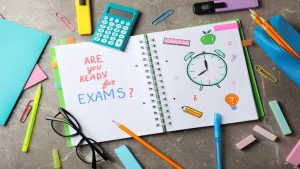As we dive into the English Literature 2010 exam, imagine it as a grand stage where words take center stage. Picture your pen as the conductor, orchestrating a symphony of thoughts on the pages before you. This exam isn’t just a test; it’s an adventure into the captivating world of literature. So, let’s get ready to write our literary story, where each answer is a chance to showcase the brilliance of our words. Welcome to the English Literature 2010 exam – where the magic of language is in your hands!
O Levels English Literature 2010 is not just another academic course; it’s a door to the world of imagination, cultural insights, and analytical thinking. Offered by Cambridge Assessment International Education, this globally recognized qualification goes beyond textbooks, helping students develop a profound appreciation for literature and honing critical literary skills. In this blog, we will navigate through the intricacies of O Levels English Literature 2010, exploring its syllabus, assessment methods, and the invaluable insights it brings. Come along as we unravel the threads of storytelling, character analysis, and thematic exploration. Join us on this expedition to understand the essence and impact of O Levels English Literature 2010 on your academic and creative journey.
1. Structure of the Paper
Cambridge O Level Literature in English (2010) | Paper 1(Poetry and Prose) | 1 hour 30 minutes 50% weightage 50 marks Two questions on two texts: one poetry and one prose Externally assessed |
Paper 2(Drama) | Weightage 50% 50 marks Two questions on two texts: one passage based question and one essay question Externally assessed |
2. Criteria Of Assessment (Marking Scheme):
In Paper 1 of O Levels English Literature 2010, candidates are tasked with answering two questions, one from Section A (Poetry) and one from Section B (Prose). Each question holds equal weight, carrying 25 marks. The exam provides a choice of two questions for each text, with relevant passages or poems printed on the question paper. To excel, candidates must showcase their:
Knowledge of Text Content (AO1):
Demonstrated through references to specific details and the use of quotations from the text. Every question in your English Literature 2010 exam is an opportunity to showcase your understanding.
- To do that effectively, start by picking 6–7 quotes from the text. Choose ones that have interesting language or structure, and that you can talk about in your answers. When you use these quotes, make sure they really fit the question and help you explain your points.
- A top-notch response will not just mention these quotes but will also weave them into your explanations, making your answers super clear and specific.
- So, it’s like building your response with these carefully chosen quotes to show off your understanding in the best way possible!
Understanding of Characters, Relationships, Situations, and Themes (AO2):
Analyzing and interpreting the various elements that contribute to the narrative or poetic structure.
- When you’re answering questions in your English Literature 2010 exam, don’t just say what you think. Instead, explain your ideas and analyze them by giving reasons.
- Focus on how the writer’s choice of words creates specific effects.
- Always link your thoughts back to the question. Your unique perspective (AO2) depends on how well you explore how the language in the poem connects to the ideas.
- It is all about digging into the words and explaining why they matter to really show your understanding.
Understanding of Writer’s Intentions and Methods (AO3):
Responding to the writer’s use of language, including stylistic choices, tone, and literary techniques. AO3 is about going beyond what is explicitly stated in the text and uncovering the reasons behind the author’s choices. It requires a thoughtful analysis of how the writer crafts their work to achieve particular effects and fulfill their overarching purpose.
- Recognize the author’s purpose in writing the text. Is it to inform, entertain, persuade, or evoke certain emotions?
- Explore the techniques the writer uses to convey their message. This includes studying their choice of language, literary devices, and structural elements.
- Examine the author’s writing style. Are they using a formal or informal tone? Is the language straightforward or complex?
- Understand the emotional tone and mood the author creates. Do they want the reader to feel happy, sad, reflective, or something else?
- Look for literary devices such as metaphors, similes, symbolism, and imagery. Understand how these contribute to the overall meaning of the text.
- Consider the historical, cultural, or social context in which the text was written. This can provide insights into the author’s intentions and the impact of their work.
- Discuss how the writer’s methods contribute to the overall impact of the text. How do their choices affect the reader’s understanding and emotional response?
- Always relate your observations back to the specific question asked. How does understanding the writer’s intentions and methods help answer the question at hand?
Personal Response (AO4 and AO5):
- Expressing personal opinions and feelings, either directly in response to specific questions or implicitly when exploring broader themes or implications. This involves sharing your opinions and feelings directly in response to specific questions or subtly when exploring broader themes.
- Express your thoughts using phrases like “I think” or “In my opinion.” Even when not explicitly asked for your viewpoint, connect with the text emotionally, use emotive language, and relate it to your own experiences when relevant.
- Keep your response relevant to the question and consider cultural and historical perspectives that may influence your feelings. This adds a personal touch to your analysis, showcasing your unique engagement with the literature.
3. Decoding Paper 1 (Poetry and Prose):
Paper 1 of O Levels English Literature 2010 revolves around the comprehensive analysis of poetry and prose, aiming to gauge students’ proficiency in interpreting literary elements and expressing their ideas coherently. The poetry section introduces students to diverse poems spanning various poets, eras, and cultures, requiring a keen examination of language, structure, and thematic nuances. In the prose component, passages from novels or short stories demand an exploration of characters, themes, and the author’s stylistic choices. Additionally, some instances may prompt a comparative analysis between the poetry and prose sections.
Success in Paper 1 hinges on a robust command of literary terms, critical thinking skills, and efficient time management. Students are challenged not only to unravel the layers of meaning within each text but also to articulate their interpretations concisely within the confines of the exam.
- Set Texts For Paper 1
| Section A: Poetry | Section B: Prose |
| These may be found in Songs of Ourselves Volume 1: The University of Cambridge International Examinations Anthology of Poetry in English (Cambridge University Press). Poems printed in the paper will be as printed in this text.From Songs of Ourselves Volume 1, Part 4, the following 15 poems:Margaret Atwood, ‘The City Planners’ ‘The Bay’ by James K Baxter Thom Gunn, ‘The Man with Night Sweats’ Robert Lowell, ‘Night Sweat’ Edward Thomas, ‘Rain’ Anne Stevenson, ‘The Spirit is too Blunt an Instrument’ Tony Harrison, ‘From Long Distance’ W H Auden, ‘Funeral Blues’ Thomas Hardy, ‘He Never Expected Much’ Fleur Adcock, ‘The Telephone Call’ Peter Porter, ‘A Consumer’s Report’ Judith Wright, ‘Request To A Year’ Charles Tennyson Turner, ‘On Finding a Small Fly Crushed in a Book’ Percy Bysshe Shelley, ‘Ozymandias’ Stevie Smith, ‘Away, Melancholy’ | Chimamanda Ngozi Adichie Purple Hibiscus Charles Dickens Great Expectations Daphne du Maurier Rebecca Henry James Washington Square Jhumpa Lahiri The Namesake Joan Lindsay Picnic at Hanging Rock Yann Martel Life of Pi |
| These may be found in Songs of Ourselves Volume 2: The University of Cambridge International Examinations Anthology of Poetry in English (Cambridge University Press). Poems printed in the paper will be as printed in this text.From Songs of Ourselves Volume 2, Part 4, the following 15 poems: Elizabeth Thomas (‘Corinna’), ‘The Forsaken Wife’ Philip Bourke Marston, ‘After’ Algernon Charles Swinburne, ‘A Leave-Taking’ Sir Thomas Wyatt, ‘I Find No Peace’ James Joyce, ‘I Hear an Army’ Charlotte Mew, ‘Rooms’ Robert Browning, ‘Love in a Life’ Lauris Edmond, ‘Waterfall’ Mary Monck (‘Marinda’), ‘Verses Written on Her Death-bed at Bath to Her Husband in London’ A R D Fairburn, ‘Rhyme of the Dead Self’ Percy Bysshe Shelley, ‘Stanzas Written in Dejection, Near Naples’ Derek Walcott, ‘Nearing Forty’ Elinor Morton Wylie, ‘Now Let No Charitable Hope’ Alexander Pope, ‘From An Essay on Criticism’ Henry Wotton, ‘The Character of a Happy Life’ | This selection of 10 short stories may be found in Stories of Ourselves Volume 2: The University of Cambridge International Examinations Anthology of Short Stories in English (Cambridge University Press); passages from these stories in the paper will be printed as in this text.From Stories of Ourselves Volume 2, the following 10 stories: no. 2 Nathaniel Hawthorne, ‘Dr Heidegger’s Experiment’ no. 16 O Henry, ‘The Furnished Room’ no. 18 Charlotte Perkins Gilman, ‘The Widow’s Might’ no. 25 Henry Handel Richardson, ‘And Women Must Weep’ no. 29 Marghanita Laski, ‘The Tower’ no. 31 Janet Frame, ‘The Reservoir’ no. 32 Langston Hughes, ‘Thank You M’am’ no. 41 Anjana Appachana, ‘Sharmaji’ no. 43 Yiyun Li, ‘A Thousand Years of Good Prayers’ no. 44 Segun Afolabi, ‘Mrs Mahmood’ |
| These may be found in New Selected Poems 1957 – 1994, by Ted Hughes (Faber and Faber). Poems printed in the paper will be as printed in this text.Ted Hughes, the following 15 poems: ‘The Thought-Fox’ ‘The Harvest Moon’ ‘The Jaguar’ ‘Football at Slack’ ‘The Horses’ ‘Roe-Deer’ ‘Wind’ ‘A Memory’ ‘Relic’ ‘Telegraph Wires’ ‘Hawk Roosting’ ‘Anniversary’ ‘Cat and Mouse’ ‘The Other’ ‘Snowdrop |
4. Decoding Paper 2 (Drama):
Paper 2 of O Levels English Literature 2010 delves into the exploration of drama and unseen texts, offering students a comprehensive platform to showcase their analytical prowess. This paper challenges students to dissect dramatic works, ranging from plays to scripts, requiring a nuanced understanding of characters, themes, and the playwright’s techniques. Additionally, candidates encounter unseen texts, putting their skills to the test as they navigate unfamiliar literary terrain. The dynamic nature of Paper 2 also invites students to draw connections and distinctions between the studied drama and the unseen material, fostering a comparative analysis. To excel, students must harness a robust grasp of literary terms, coupled with sharp critical thinking and effective time management. Success in Paper 2 demands not only unraveling the intricacies of each text but also articulating interpretations with precision within the constraints of the examination setting.
- Set Texts For Paper 2
| Paper 2: Drama |
| Lynn Nottage Crumbs from the Table of Joy Wole Soyinka Death and the King’s Horseman Tennessee Williams A Streetcar Named Desire William Shakespeare A Midsummer Night’s Dream William Shakespeare Othello |
Conclusion
The English Literature 2010 exam is a literary adventure, inviting students to wield their pens as conductors of words on a grand stage. More than an academic pursuit, it unlocks the door to imagination, cultural insights, and analytical thinking. Structured into Poetry and Prose (Paper 1) and Drama (Paper 2), the exam demands a fusion of knowledge, critical analysis, and personal expression. Success requires decoding literary elements, understanding authorial intent, and weaving personal responses into a symphony of words.
Embrace the magic of language as you navigate this captivating journey through the realm of literature.



